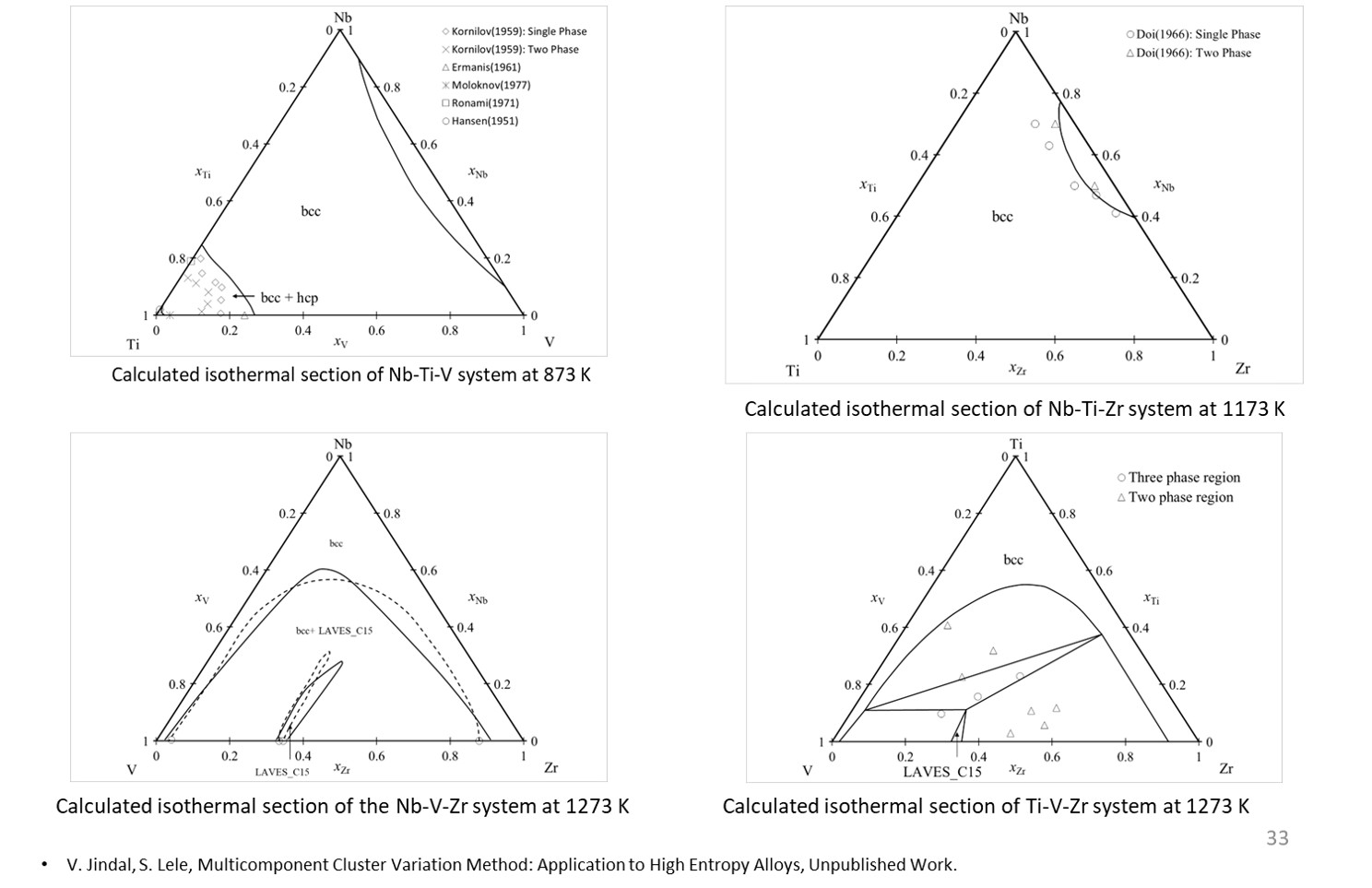Optimization (Thermodynamic Assessments) and Database
Thermodynamic Assessments
We have developed algorithms and computer programs for various thermodynamic calculations. For binary systems, we utilized the Newton-Raphson method for phase boundary calculations and the internal minimization of Cluster Expansion-Cluster Variation Method (CE-CVM) expressions. Additionally, the Levenberg–Marquardt (LM) algorithm was employed in the outermost loop to optimize model parameters during thermodynamic assessments. For multicomponent systems, we adapted Hillert’s algorithm for both phase boundary calculations and the internal minimization of CE-CVM expressions. These advancements enable precise phase equilibria calculations for complex systems. Further details on the binary system algorithms are available in our previous publications (Jindal et al., 2013), while the specifics of the multicomponent algorithms will be detailed in an upcoming publication.
Many binary systems have been optimized so far, for example Cr-Mo, Nb-Ti, Nb-V, Nb-Zr, Ti-V, Ti-Zr, etc. The solution phases (bcc, fcc, and hcp) in these systems were modeled by the Cluster Expansion-Cluster Variation Method (CE-CVM), which takes into account short-range order (SRO) and is a better physical model than the regular solution (R-K) polynomial used in conventional CALPHAD databases. Ab initio calculations were performed using Special Quasirandom Structures (SQS) and the Cluster Expansion (CE) method to derive accurate enthalpy of mixing data.

Figure 2: Thermodynamic assessment of the Nb-V system.
In the ternary system, we have recently optimized various subsystems of the Nb-Ti-V-Zr system. Those results are also shown in the figure.

Figure 2: Ternary subsystems of the Nb-Ti-V-Zr system.
Thermodynamic Databases
Using the CT approach, we have so far generated two databases.
- (i) Ti-B-Fe-Mo System: Thermodynamic modeling of Ti-B-Fe-Mo was performed using the CALPHAD approach based on extrapolations from the four ternary subsystems, namely: Ti-B-Fe, Ti-B-Mo, Ti-Fe-Mo, and B-Fe-Mo. This database consists of a total of 19 phases. This was part of the DRDO-armreb project.
- (ii) Nb-Ti-V-Zr System: The Nb-Ti-V-Zr System was modeled using CE-CVM. It includes descriptions of 6 binary and four ternary subsystems. This database consists of a total of 2 solid solution phases, one intermetallic, and one liquid phase. This was part of the SERB project.